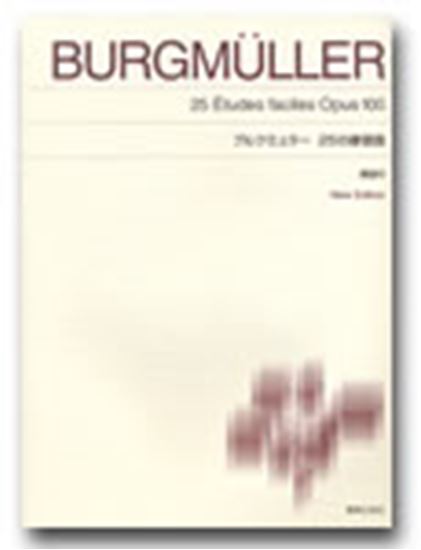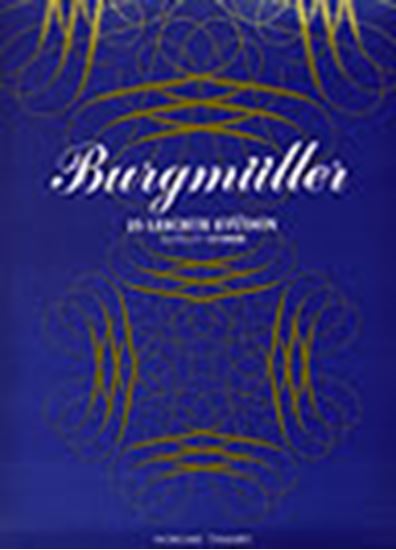Burgmüller, Johann Friedrich Franz : 25 Etudes faciles et progressives, conposées et doigtées expressément pour l'étendue des petites mains La tarentelle Op.100-20
Work Overview
Genre:etude
Total Playing Time:1 min 30 sec
Copyright:Public Domain
Commentary (3)
Author : Sato, Takashi
Last Updated: January 31, 2022
[Open]
Author : Sato, Takashi
"Tarantella" is a fast, passionate dance of Southern Italian origin. It is in 6/8 time, characterized by a leaping rhythm with rests on the second and fifth beats, as seen in measure 11.Chopin, Liszt, and Rachmaninoff, have left behind masterpieces in the tarantella style, but many piano students, including the author, likely first encountered the "tarantella" genre through this piece by Burgmüller.
Performance Points (Original Tempo ♩.=160)
Although it is a passionate piece, do not rush through it impulsively. Pay attention to the length of the left-hand notes from measure 9. Ensure that both hands are precisely aligned in measures 21-24 and 29-32. If the right hand is played carelessly, it will become apparent here. The middle section is in the parallel major (D major). Change the atmosphere completely. Aligning the short appoggiaturas from measure 41 with the beat (left hand) will highlight the difference from the tarantella rhythm starting at measure 45. In the coda (measure 56, 2nd ending), gradually fade away, but the last two measures should be in tempo as indicated.
(From To-on Edition "Burgmüller 25 Etudes" (NS70))
Author : Iida, Arisa
Last Updated: March 15, 2018
[Open]
Author : Iida, Arisa
Musical example provided by: Ongaku no Tomo Sha
Author : Ooi, Kazurou
Last Updated: May 23, 2019
[Open]
Author : Ooi, Kazurou
The primary consideration in this piece is articulation. The challenge lies in how to play the left-hand chords. Please observe the left hand in measure 9. The left-hand chords are notated as dotted quarter notes. Now, look at measure 33. You will notice that the left-hand chords are staccato, written as a quarter note plus an eighth rest.
It seems the composer intended a clear distinction in the articulation of these chords. However, here lies the problem: if one strictly adheres to the dotted quarter note value for the chords written as such (e.g., measures 9-20, 25-28, and 50), the sound becomes excessively heavy, and the sense of 'Allegro Vivo' is lost.
The author has observed numerous videos and played the piece personally. While these dotted quarter note chords should be sustained to some extent, they should not be held for their full duration. In fact, they should arguably be considerably shorter than their written note value. This then leads to the question: why did the composer not write these as quarter notes or eighth notes instead of dotted quarter notes?
This is merely a hypothesis, but if we assume this piece was originally conceived for string instruments, with the melody played by violins and the accompaniment by cellos and violas, and consider the bowing technique where the bow lifts off the string after each chord before playing the next, a slight break would occur between chords. With this in mind, it might be appropriate for the left-hand chords not to strictly adhere to their written note values, but rather to be played with a sense of the fingers lifting off the keys and striking them again. What are your thoughts on this?
PTNA & Partner Channel Videos(22items) View More
Sheet MusicView More
Scores List (30)

(株)東音企画(バスティン)

(株)東音企画(バスティン)

(株)東音企画(バスティン)
![やさしいピアノ小曲集[発表会用/CD付] - 楽譜表紙画像](https://ptna-assets.s3.ap-northeast-1.amazonaws.com/enc/books/47.jpg)
(株)エー・ティ・エヌ

(株)エー・ティ・エヌ

(株)全音楽譜出版社

(株)全音楽譜出版社

(株)全音楽譜出版社

(株)ドレミ楽譜出版社

(株)音楽之友社

KMP(ケイ・エム・ピー) ケイエムピー

(株)ドレミ楽譜出版社

ハンナ(ショパン)

(株)ヤマハミュージックエンタテインメントホールディングス

デプロMP

(株)ドレミ楽譜出版社

(株)全音楽譜出版社

(株)ドレミ楽譜出版社

カワイ出版

カワイ出版

デプロMP

(株)ヤマハミュージックエンタテインメントホールディングス

デプロMP

(株)音楽之友社

(株)共同音楽出版社

(株)音楽之友社

(株)ヤマハミュージックエンタテインメントホールディングス

Neil A. Kjos Music Company



















